Introduction

After I tried the Visionar 109mm 1.6 I became quite interested in this line of projector lenses as they offer quite a lot of glass for the money. The 168mm 1.9 is the third longest of the line. It is quite a bit ligther than the two longer ones, so is it a good compromise?
Sample Images
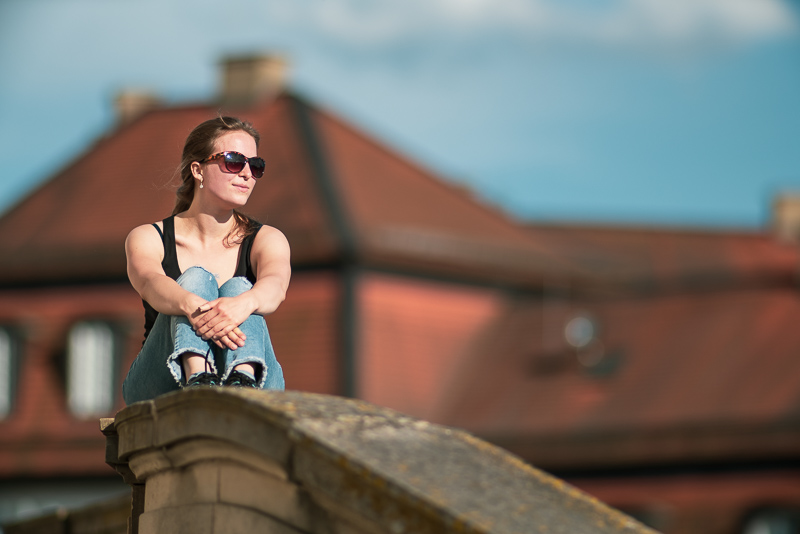
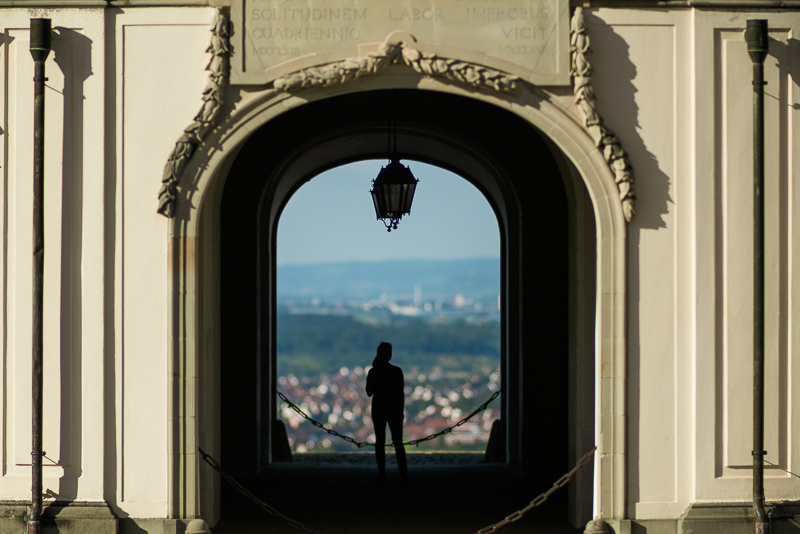
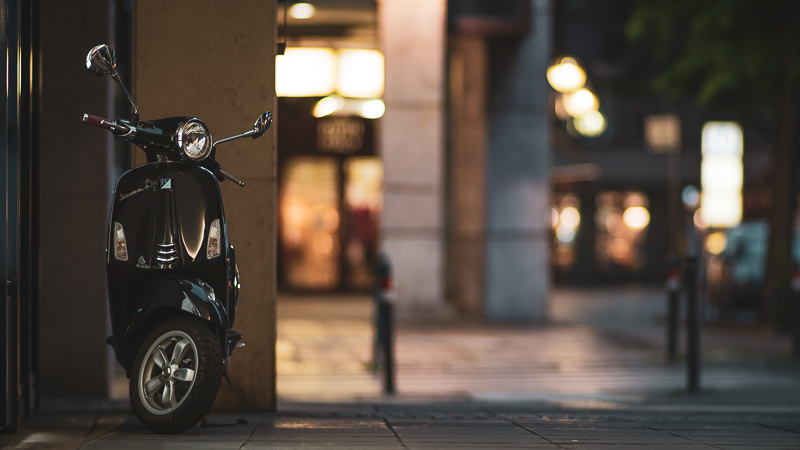
Most of the sample images in this review can be found in full resolution here.
Visionar History
The Visionar lenses were used for cinema projectors and came in different aperture/focal length combinations like 1.6/55mm, 1.6/92mm, 1.6/100mm, 1.6/109mm, 1.9/141mm, 1.9/168, 1.9/183 and even 1.9/200mm (probably not a complete list).
Usually these lenses are pretty well corrected, especially considering their age, but they come with two significant flaws: they usually don’t feature a helicoid and cannot easily be focused and they also don’t feature an aperture diaphragm so they cannot be stopped down.
The same lenses were also produced by Rathenower Optische Werke (short: ROW). Optically they are the same but can sometimes be found cheaper because of the missing “Zeiss” tag.
Specifications
This lens was adapted using stock parts so no non reversible modifications to the lens had to be made. You will find the single components I used in the handling section. With all these components the lens has the following specifications:
- Diameter: 109 mm
- Field of view: 14.7° (diagonally)
- Length: 218 mm (at infinity with adapter)
- Weight: 2525g (with adapter and tripod collar)
- Filter Diameter: –
- Number of Aperture Blades: –
- Elements/Groups: 6/6
- Close Focusing Distance: 1.20 m
- Maximum Magnification: 1:5.0
- Mount: Ø80 adapted to Sony-E
This lens itself can be bought used and prices start at $400/400€ on ebay.com/ebay.de (affiliate links).
Handling / Build Quality
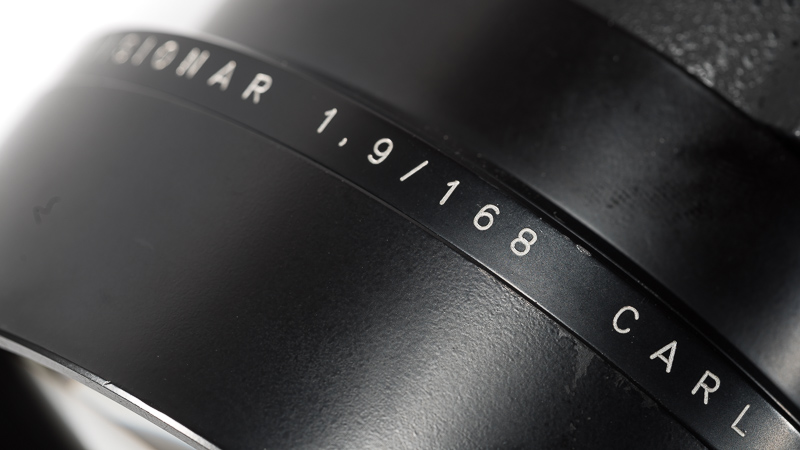
The lens itself is a massive piece of metal with 6 big glass elements. No focus ring, no aperture diaphragm.
You can easily adapt the lens by getting the following parts of ebay: Ø80mm to M65 adapter in combination with an M65 helicoid 25-55mm and an M65 to E-mount adapter. I further recommend getting a generic tripod collar for the Nikon AF-S 80-200mm 2.8, you may add a stripe of duct tape for a tight fit (affiliate links).
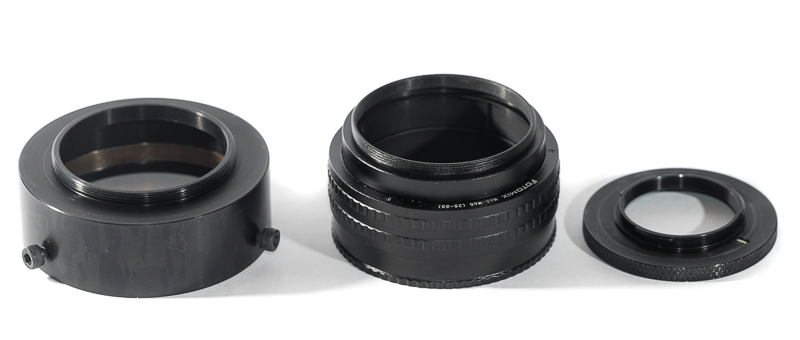
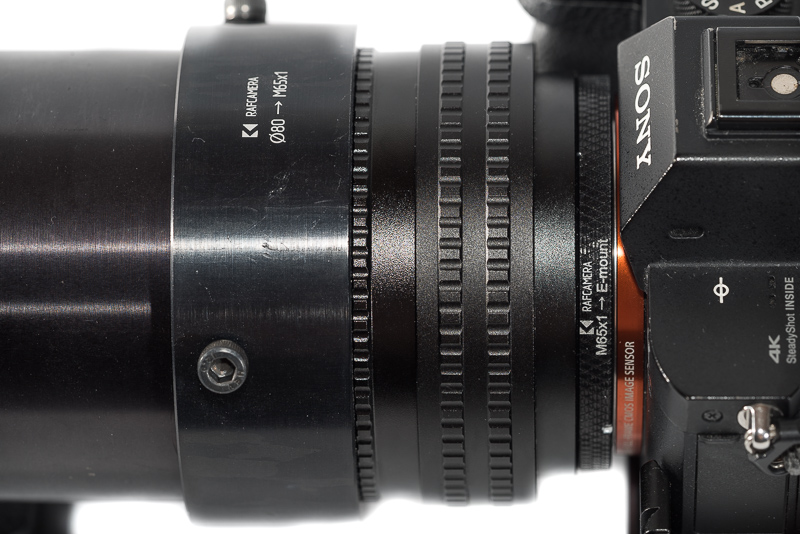
With a lens this big you will obviously be holding the lens and moving the camera when turning the helicoid. This setup is definetly not for fast action shots because the balancing is somewhat off with the “focus ring” so close to the camera.
Vignetting
light falloff
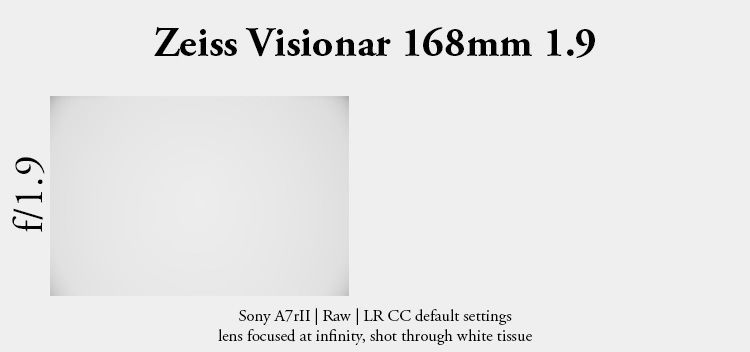
This lens covers even more than the full frame area and this is positive influence on the vignetting figures. Vignetting amounts to 1.5 stops, which is a bit less than the Canon 1.8/200 wide open and comparable to the Olympus 2/180.
Furthermore the darker corners are only there at infinity, if you focus a bit closer they are gone.
mechanical vignetting
What is really impressive with this lens is the low amount of mechanical vignetting. We move from the center (left) to the extreme corner (right) and see how the shape of the light circle changes.

As can be seen this Visionar shows only very minor mechanical vignetting and the light circles have almost the same size across the whole frame.
This is quite different from most normal DSLR lenses and does not only mean that the bokeh towards the corners will look pretty nice but also makes the Visionar a great lens for brenizer/bokehpanorama work.
Sharpness
infinity
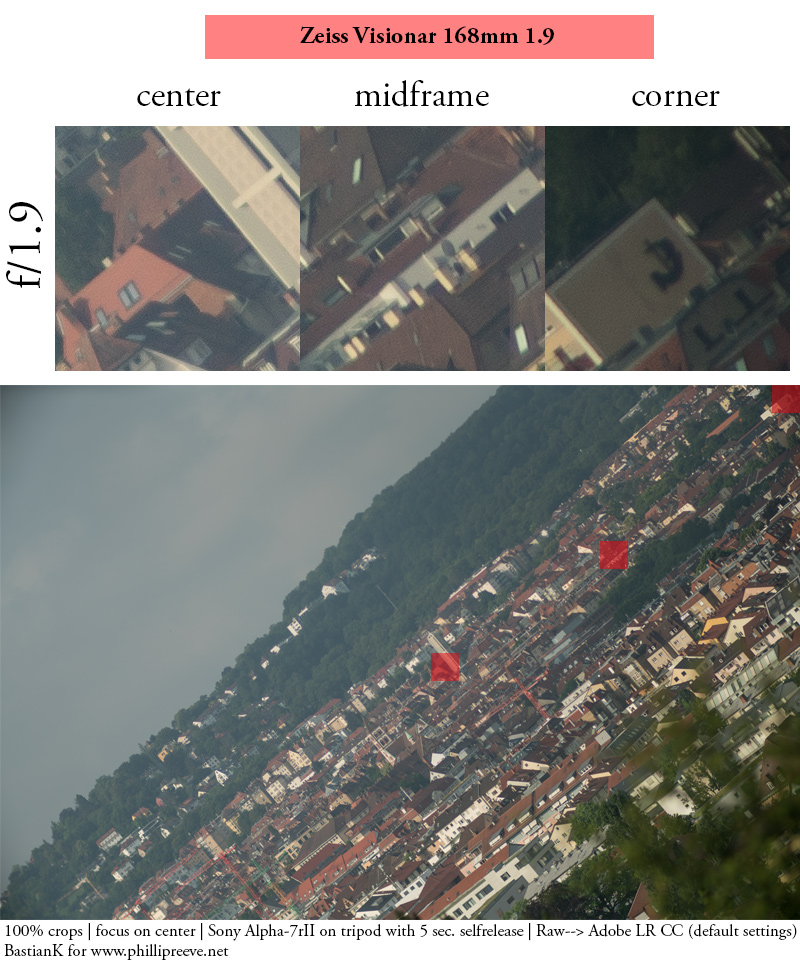
Compared to the shorther 1.6/109 and the longer 1.9/183 this lens shows a little less field curvature at infinity. Still, one cannot stop the lens down, so if you want a lens for sharp landscape or architecture pictures at infinity best have a look for something slower and lighter.
close (1.20m), center
100% crops from center, A7rII
The performance at the minimum focus distance – even in the center – is not exactly great.
This lens works best at mid (portrait) distances, so have a look at the sample images to see if the performance is sufficient for your needs.
Flare resistance
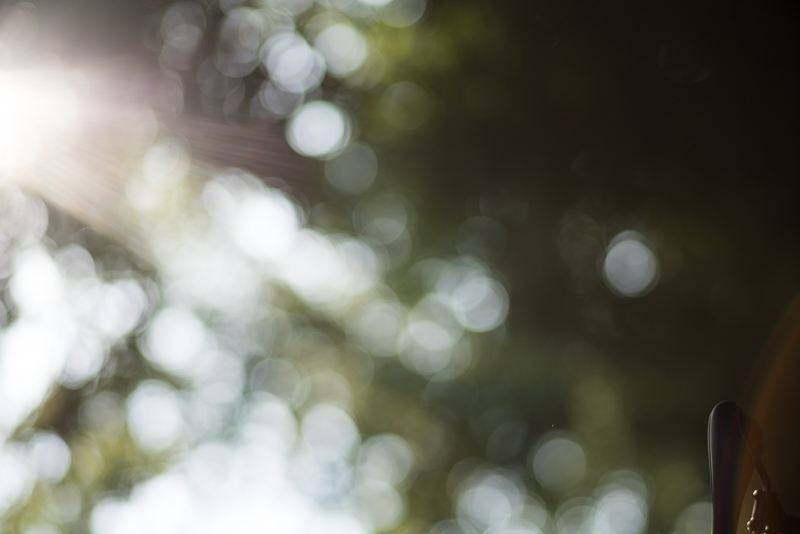
Apart from the lack of helicoid and aperture diaphragm the flare resistance is the biggest drawback to this projector lens. Without strong light sources in the frame – or close to it – contrast isn’t bad at all, but if there is stray light hitting the lens contrast is significantly reduced.
In the following comparison the sun was close to the frame in the first shot, which led to a significant loss in contrast. For the second shot I moved a bit to the side which gave significantly better results, but there is still veiling flare across most of the frame, just less intense. Processing is exactly the same for both shots.
This is not your lens for shooting into the sun, so you really have to watch out for this, but at least sometimes you can use a bit of flare for artistic purposes:
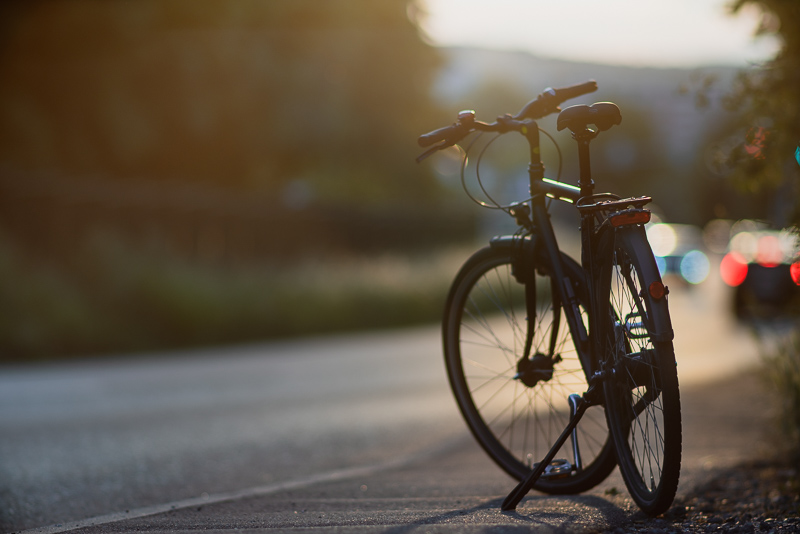
Coma
Coma correction is actually pretty decent, way better than many modern lenses.
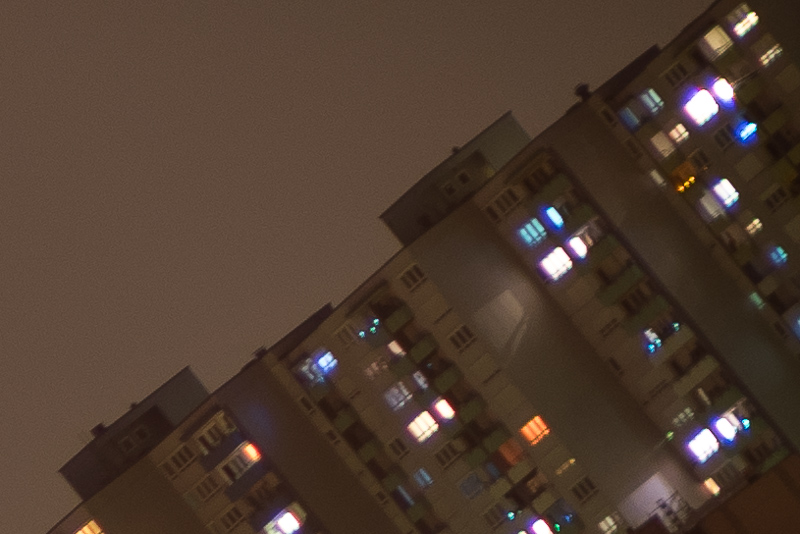
Distortion
Distortion is pretty much non existent.
Bokeh
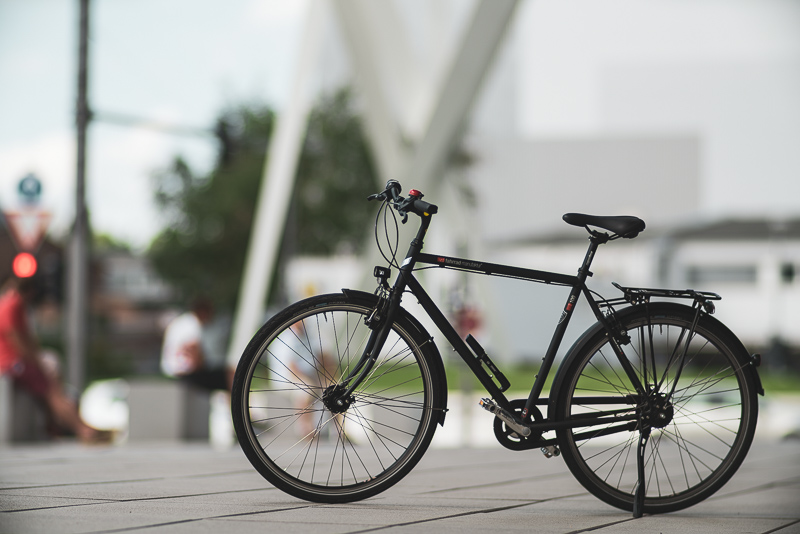
If you are interested in this lens it is obviously for the bokeh rendering. The quality changes with the focus distance, but not to the same degree as we have seen with the Visionar 109mm f/1.6. Even if you focus at things further away there is only very little outlining.
As this lens has well behaved mechanical vignetting it is a good choice for brenizer/bokehpanorama work:

There are certain situations though where bokeh can show a bit of outlining especially with complex structures in the transition zone:
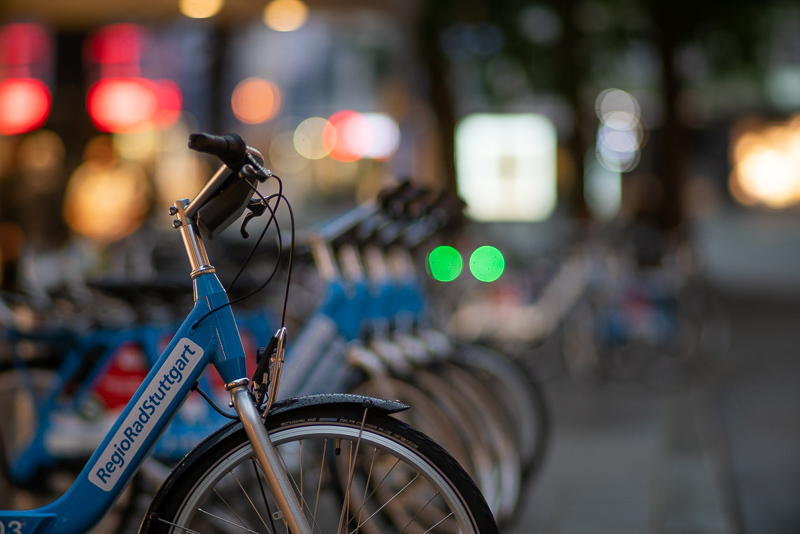
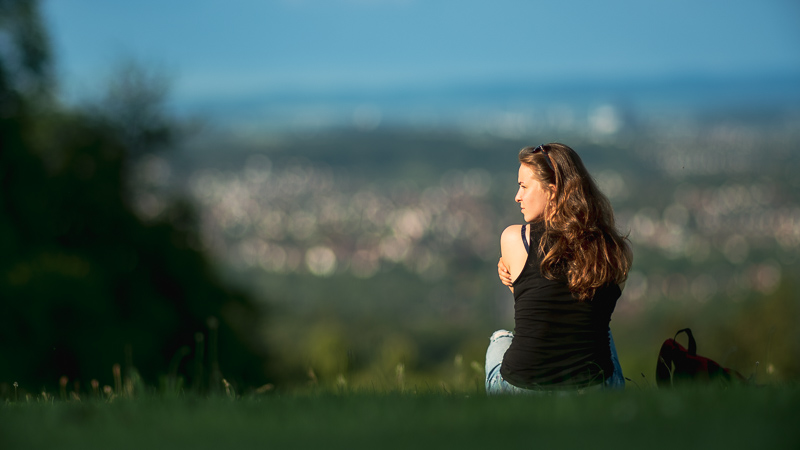
But in the end most of the time you get really nice bokeh rendering at a bargain price point.
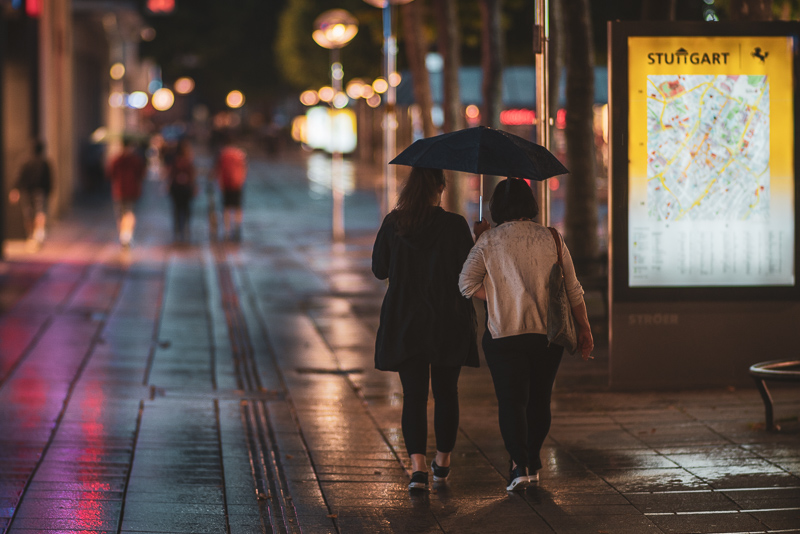
Chromatic aberrations
lateral
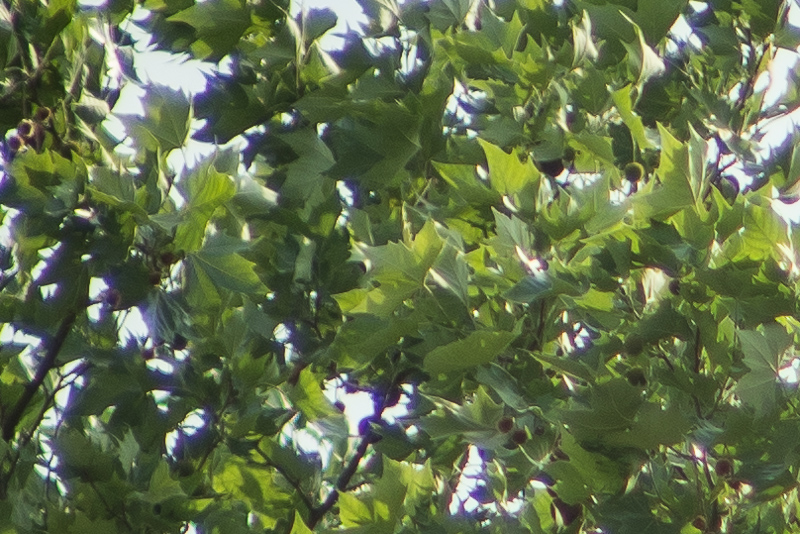
With this lens you almost always have a combination of lateral and longitudinal CA so even with correction there will still be color fringes left. As said: this lens is not for infinity landscape shooting.
longitudinal
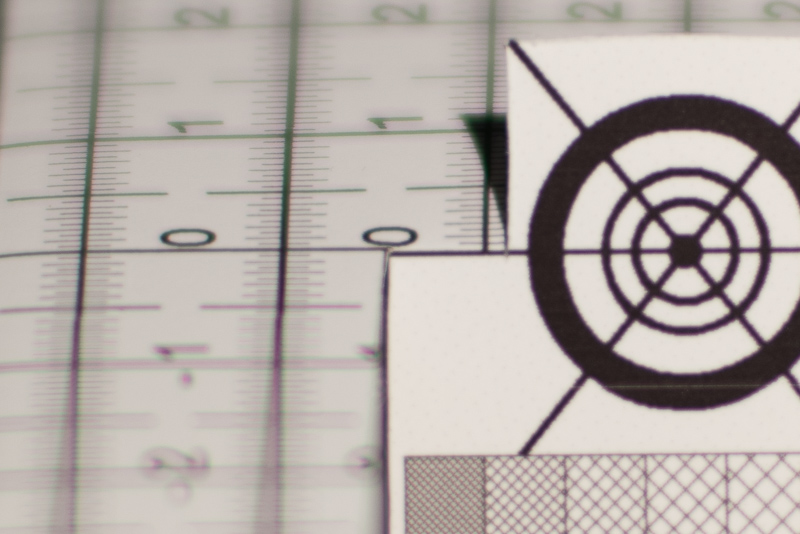
In close up scenarios the longitudinal CA are not overly pronounced, but if you focus at something further away in more demanding scenes you can definetly spot some purple fringing, comparable to most legacy 85mm 1.4 lenses:
In this case it was possible to correct the purple fringing with the help of Lightroom, but you can see that it wasn’t a fully lossless process.
Alternatives
There are not many lenses with comparable specifications:
Olympus OM Zuiko 180mm 2.0 Auto-T:
This is the closest in terms of specs. It has better sharpness at all distances due to a floating elements design, better flare resistance and is significantly lighter. It also shows worse mechanical vignetting figures and costs at least 10 times as much.
Carl Zeiss Jena Visionar 183mm 1.9:
This is slightly longer so I expected bokeh to be even better, but this was not the case and I prefer this 168mm 1.9.
Conclusion
good
|
average
|
not good
|
I already found the Visionar 109mm f/1.6 to be an interesting lens, but this one I like quite a bit more. With these parameters there is barely any competition, as I have shown in the Alternatives section. Compared to those SLR lenses there are a few obvious disadvantages: The lack of an aperture diaphragm means this lens will only be suited for portraiture and shallow depth of field photography and not really for landscape and architecture. Furthermore flare resistance is really quite bad, so you always have to watch out for stray light hitting the front element.
But if you can work around these flaws the lens can give great results, as I have probably shown with the sample images. I often found the bokeh to be very pleasing, especially in the night scenes.
If you already liked the look of the super fast tele lenses like the Olympus 2/180 or the Nikon/Canon 2/200 – but so far you couldn’t or didn’t want to afford these – you should consider giving these longer Visionar lenses a serious look. As with these you can get similar bokeh rendering for very little money.
So far this is my favorite among the Visionar lenses.
This lens itself can be bought used and prices start at $400/400€ on ebay.com/ebay.de (affiliate links). Have a look at the handling section for the needed accessoires to mount it to your E-mount camera.
Sample Images
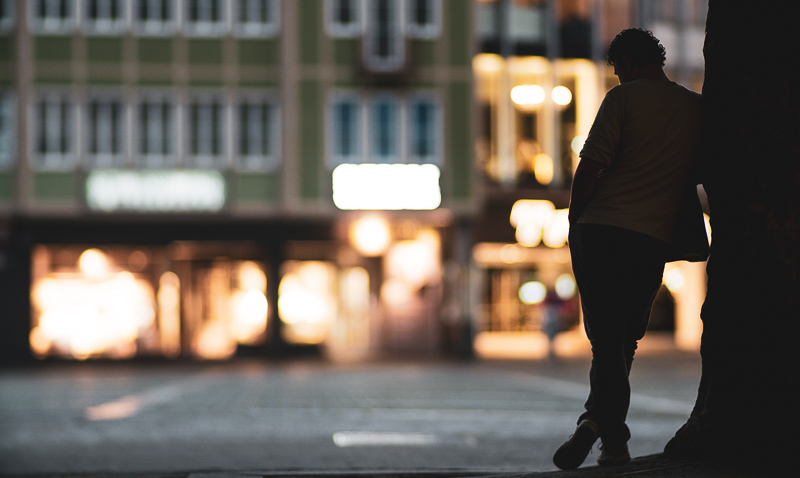
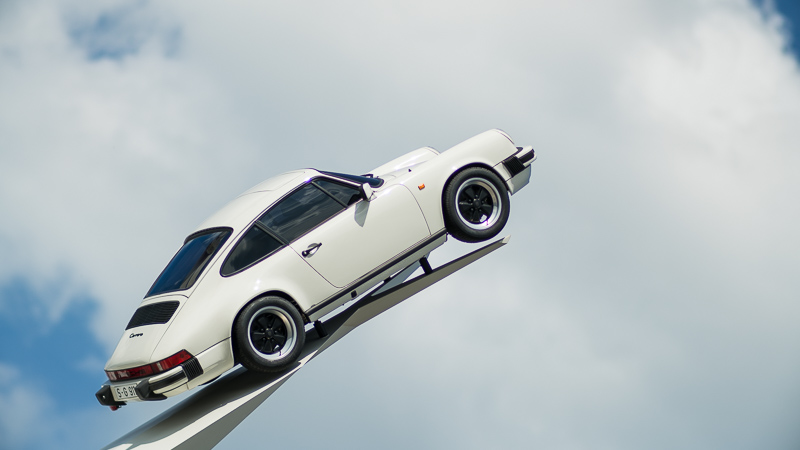
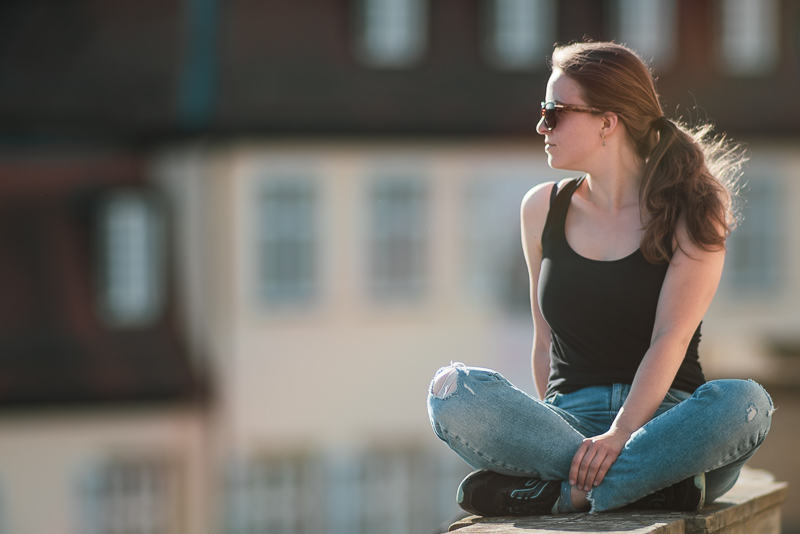
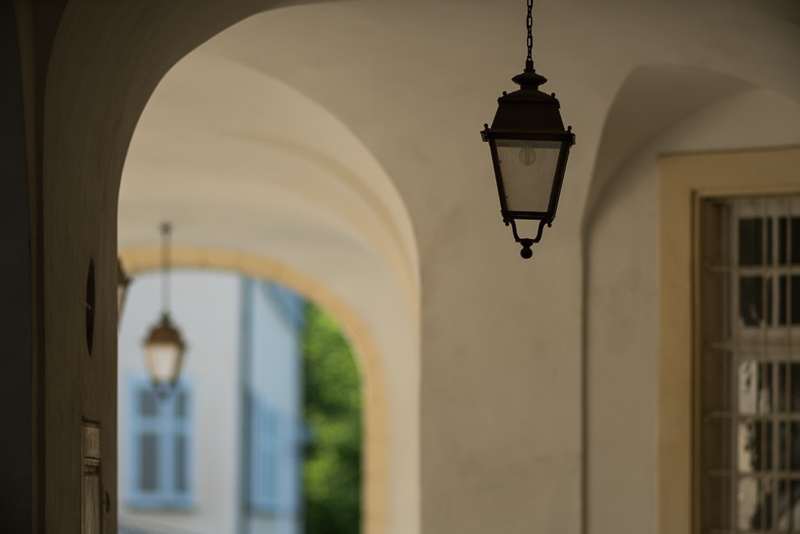
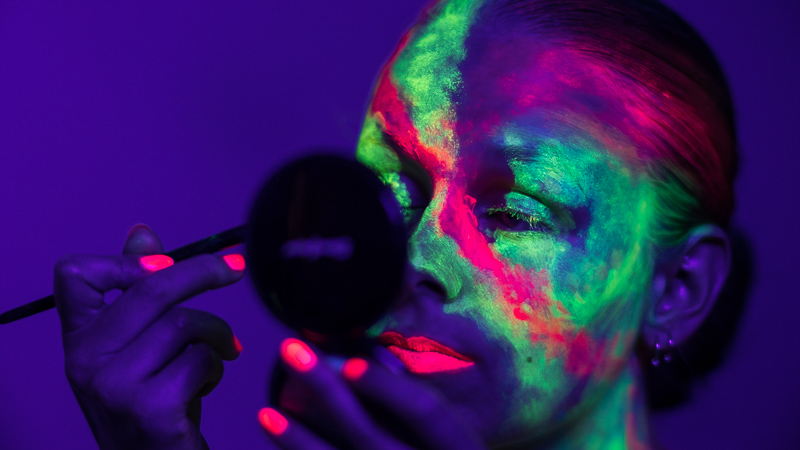
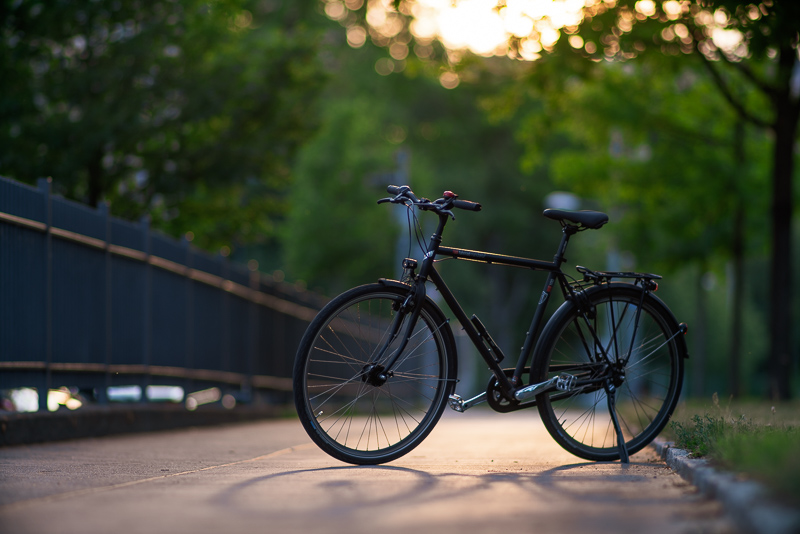
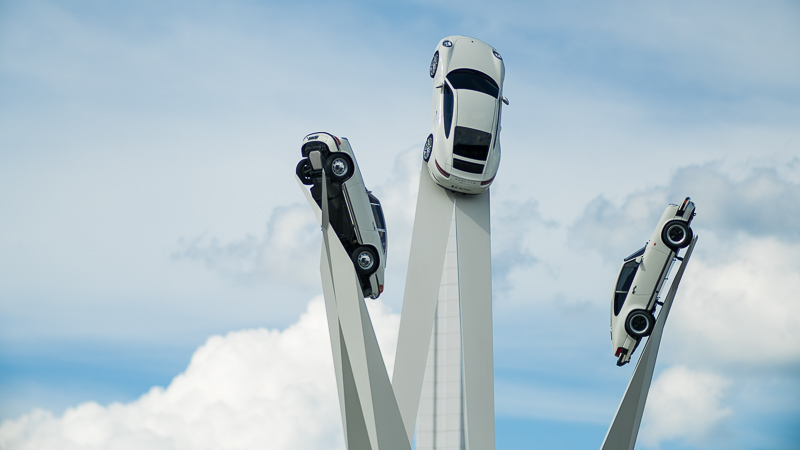
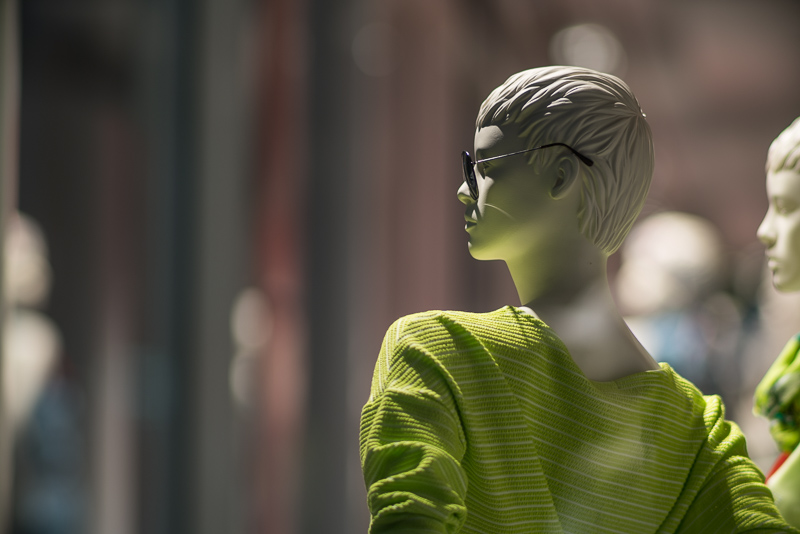
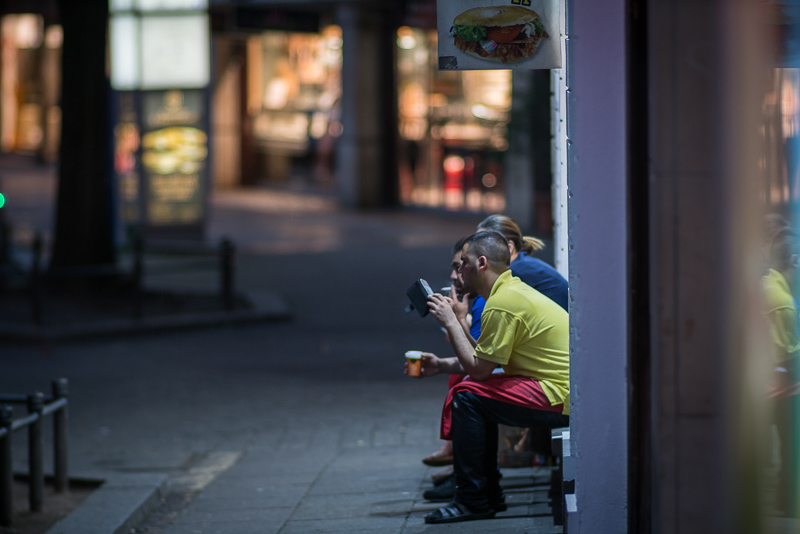
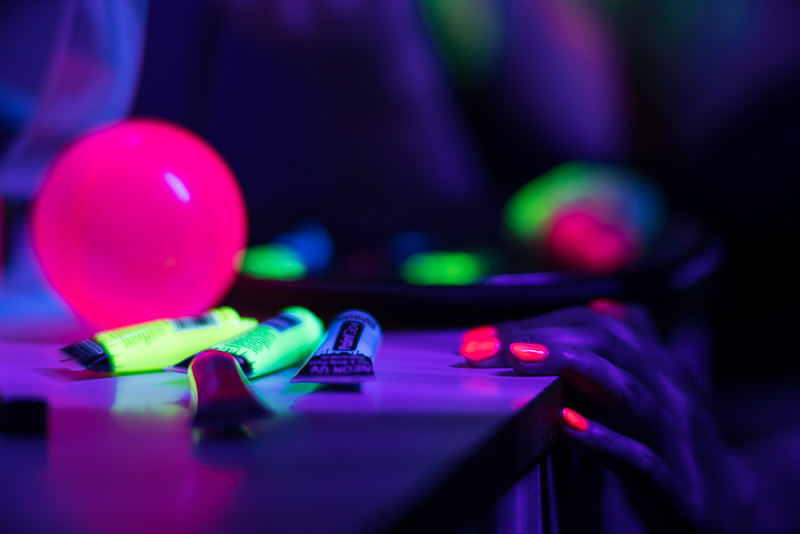
Most of the sample images in this review can be found in full resolution here.
Further Reading
- Sony FE lenses: Our comprehensive and independent guide
- Canon FD 85mm 1.2 SSC
- 35mm comparison: Zeiss, Leica, Voigtlander
- Tripods for mirrorless cameras
Support Us
Did you find this article useful or just liked reading it? Treat us to a coffee!
![]()
![]()
![]() via Paypal
via Paypal
This site contains affiliate links. If you make a purchase using any of the links marked as affiliate links, I may receive a small commission at no additional cost to you. This helps support the creation of future content.
Latest posts by BastianK (see all)
- 2025 – Year in Review - December 23, 2025
- Review: Sony FE 70-200mm 4.0 G Macro OSS II - December 20, 2025
- Review: Viltrox AF 35mm 1.2 FE LAB - December 17, 2025
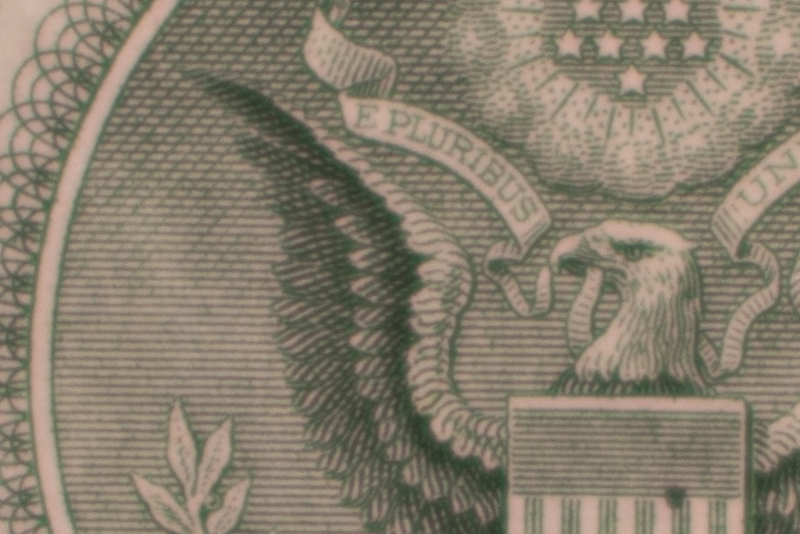
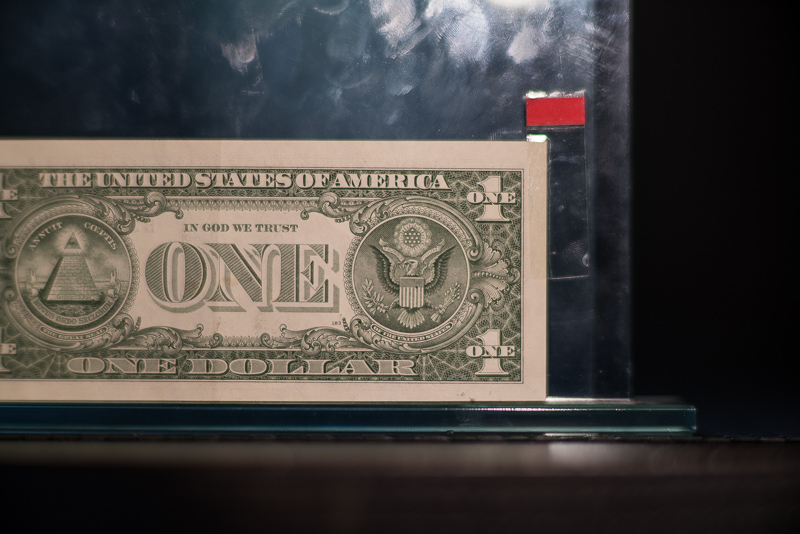
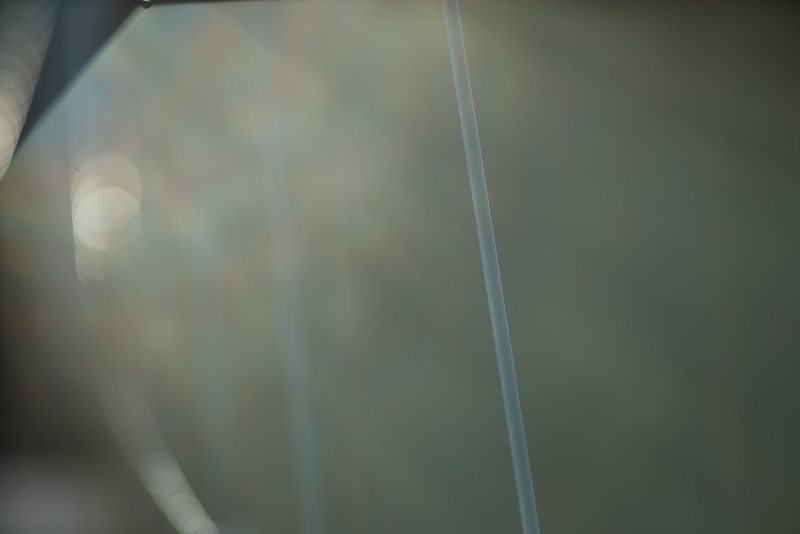
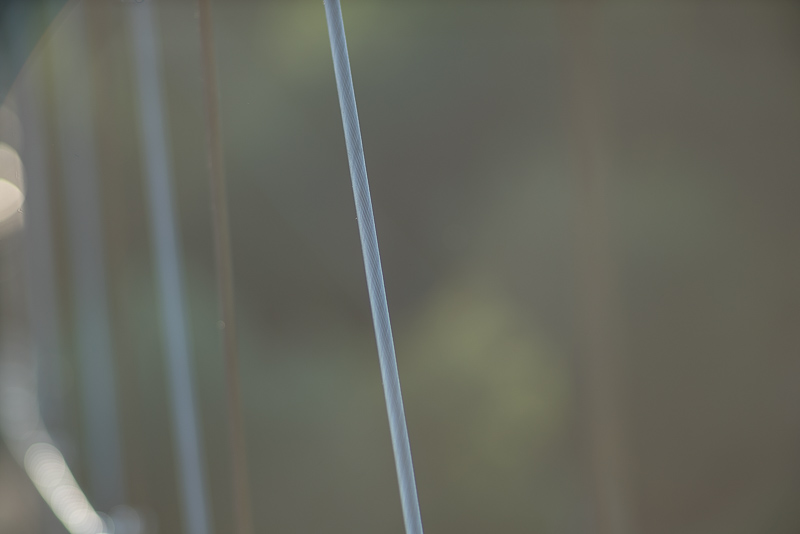

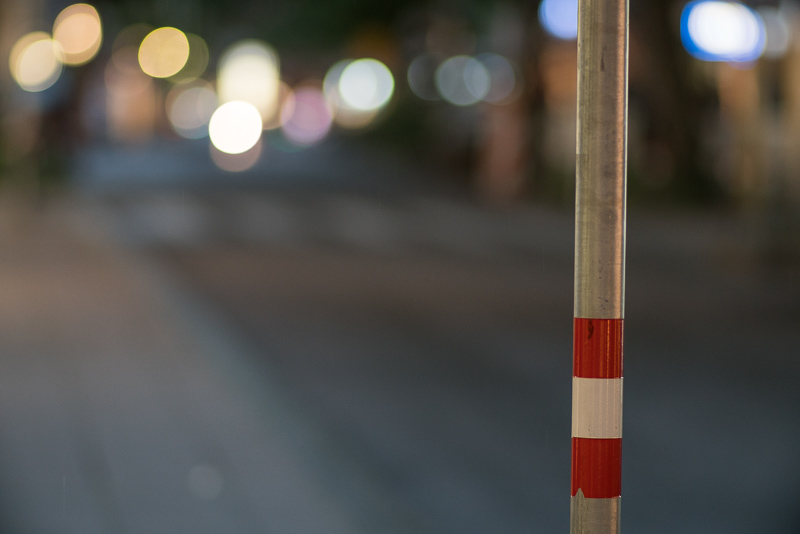
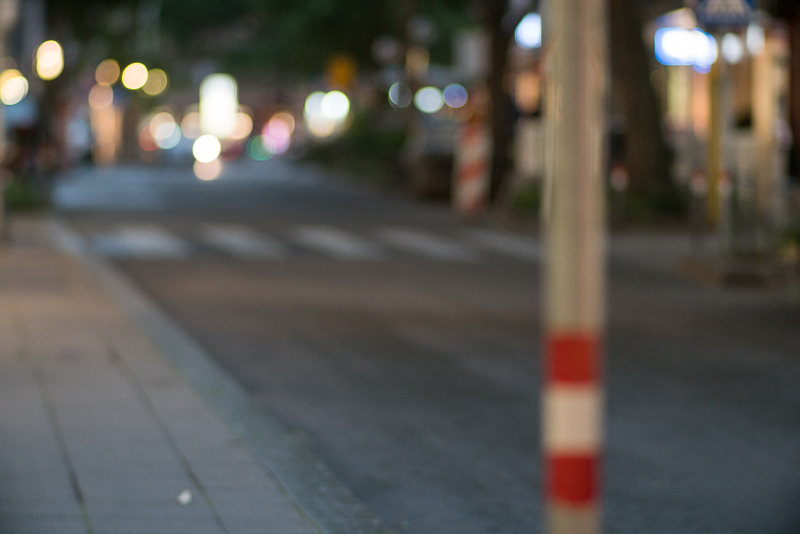
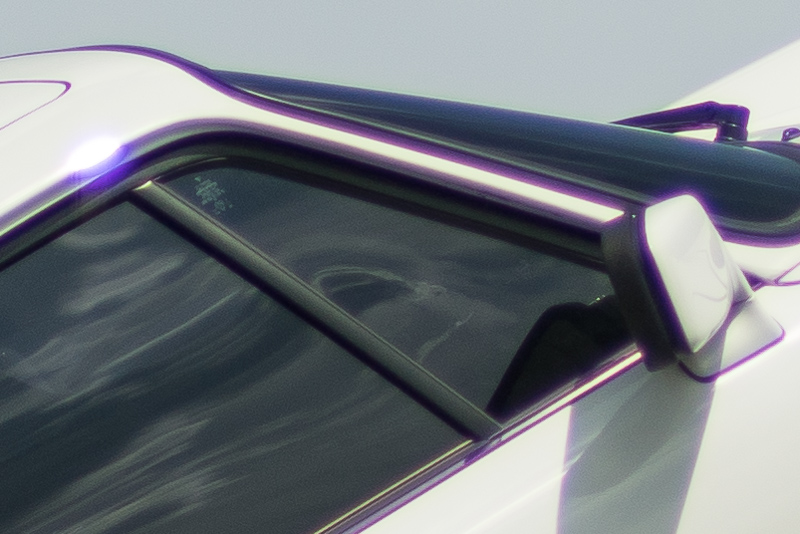
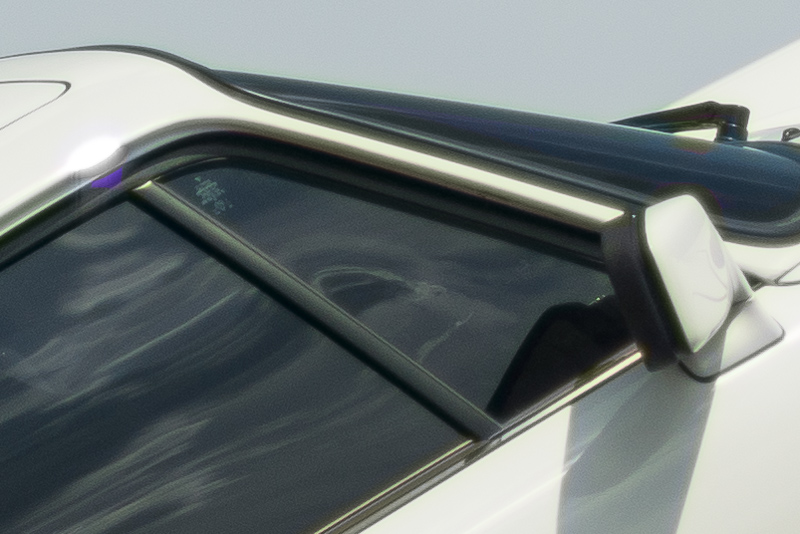
Thanks a lot for this excellent interesting report
Thank you for reviewing this pretty rare projection lens!
hi bastian, thanks for the review so far. i really like the bokeh look of it..
do you think its possible to adapt it onto a techart pro, to get some sort of autofocus?
I’m recently doing a lot of portraits using old canon fd lenses on my techart pro, but I’m searching for some fast tele lenses to try sth new 😀
greetings from constance
RAFcamera offers an M65->M42 adapter, so if you add an M42->Leica-M adapter you should be able to mount it on the Techart-Pro.
There might be some vignetting issues and you may need the 17-31mm helicoid instead of the 25-55mm helicoid to still be able to focus at infinity.
The tech art pro has a weight limit of around 800 grams, you would need to hold the lens & let the camera move to obtain focus, & use a body that weighed less then 800 grams.
its a massive lens,not something to walk around with. Canon fdn 300mm f2.8L weight is also around 2.5kg if I remember correct. I ended up with selling it,but sometimes f2.8 with 300mm fl is needed.
Regards Göran
Another great review of an interesting piece of glass. Definitely not an every day optic!
Just one note. It says on top of the page that this review is “uncategorized”. You should put it in the lens porn category, bestiality section. 😆
What do you think is a reasonable price to pay for this projector lens? You say prices start at 300eur. Consindering all the compromises i think that 300 is already alot. Zeiss Visionar might be quite rare, but they also seem not very popular because of the limited useability. I doubt theres more than a handfull of people worldwide actually looking for one for cinematic use, so a bokeh bargain for <300eur shouldnt be impossile?
Your alternatives with this amount of subject separation are lenses like the Canon/Nikon 2/200 which easily cost 10 times as much.
Between 200 and 300€ is definetly a fair price for one of the longer Visionars (168/189/200 f/1.9).
Hi Basitan,
i see this lens is listed on ebay, may i ask why you are selling it?
Do you now use the ef 200f2 in your portrait kit?
Yes exactly.
I was still thinking about keeping it, as for Brenizer the 1.9/168 is quite a bit better due to the bigger image circle,
but the holes the 2/200 and A7III burnt in my pocket are too big…
Do the longer focal length models have larger image circles? I’m thinking of setting something like this up for medium format as well as on my Sony. I may or may not have full coverage, but even without full coverage it may be interesting on medium format if the image circle is large enough.
Depends a lot on what you think of when saying medium format.
All the longer ones easily cover 44x33mm, I am not sure all of them manage 6×6 though.
I have a phase one, so 54×44. “easily cover 44×33” sounds pretty good. It seems like a no-brainer for use with my A1, but it would be worth more of an investment if the image circle is 70mm or more… if you are think some cover even film medium format, well, that’s very encouraging.
Some of the longer ones do, yes.
Is it easy to remove the M 65 Sony E adapter from the camera (I have a Sony a 6500)? Since the adapter with a helicoid is larger in outer diameter of the bayonet mount and won’t they close the lens release button on such a compact camera as mine.
It is a bit difficult to get to the lens release button, this is also true for the A7 series.
Having looked at my lenses, I decided that this problem can be solved by adding a 10 or 16 mm macro ring in front of the M65 adapter.